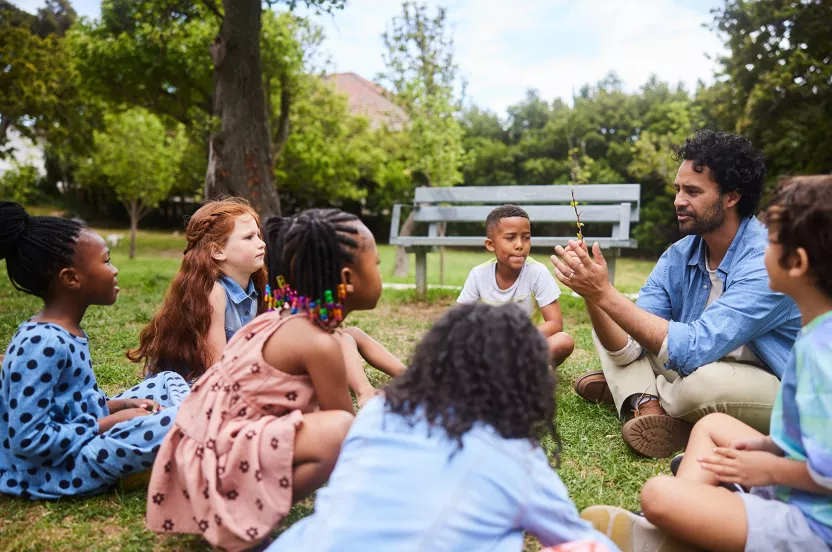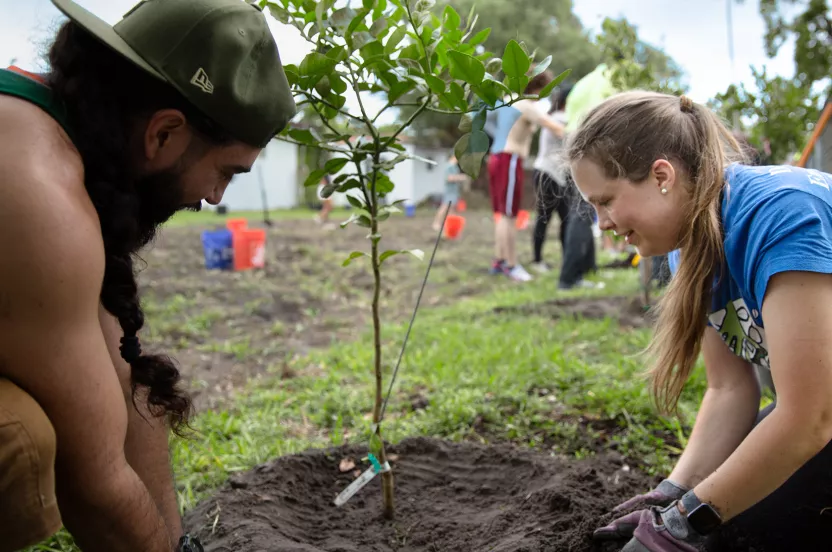Give before midnight on July 31 to double your impact where trees need us most. CHOOSE A PROJECT
Trees in Communities
Tree Campus Healthcare
The health benefits of trees are undeniable, which is why we’re proud to partner with forward-looking healthcare facilities and recognize those that promote tree planting, education, and engagement.


Healing with trees
Tree Campus Healthcare is a national recognition program that celebrates healthcare facilities using trees as a tool for community wellness.
Facilities earn recognition by meeting five standards during the calendar year and submitting an application in the winter. Through innovative projects, staff and patient engagement, and tree care planning, facilities foster greener, healthier places to live and heal.
The Campus Connection
In addition to healthcare facilities, the Tree Campus program is also active in all 50 states on college campuses and in K-12 schools. Here’s the nationwide network of campuses you’ll be joining.
Healthcare facilities in many states are making massive strides in making their grounds more tree-friendly. Here’s what our partners have done in the last year:
59
Recognized facilities
19,978
Trees planted
18
States with a recognized institution
Become a Tree Campus
Overview
Start Your Journey
To earn Tree Campus Healthcare recognition, your facility will meet five standards during the calendar year and submit your application in the winter. Not sure where to start? Take our quick readiness quiz to see how close you are to earning recognition.
Standard 1: Advisory Committee
Each qualifying facility or campus will have an Advisory Committee with at least three members from among the following groups: healthcare providers, facility or grounds managers, administrators, patient advocates, residents, and community forestry advocates or officials.
Standard 2: Facility Tree Care Plan
Qualifying plans will set policies that govern management practices, both for staff and contractors. For facilities with little to no space for trees on their own property due to site restrictions, facilities may adopt the street, boulevard, or park trees near or adjacent to campus.
Standard 3: Community Forestry Project
The facility will lead one or more community forestry projects during the year, including tree planting, tree maintenance, tree inventory, tree monitoring, and other practices in the community. Activities may occur on private or public property and involve either employees or volunteers, so long as community residents benefit from the project.
Standard 4: Celebrate & Educate
Your facility must hold at least one event each year that educates staff, patients, or the community about the health benefits of trees. This could be a celebration, training, workshop, tree walk, or educational campaign that highlights the link between trees, wellness, and resilience.
Standard 5: Financial Investment
One measure of the connection between trees and health in the community is the annual financial investment in tree projects, education events, and community outreach—both on and off-campus. Though not mandatory, it is suggested that the facility work towards an annual investment of $2 per employee (Full-Time Equivalent), either as cash or in-kind expenses, or in combination.
Send in Your Application
Once your facility has met all five Tree Campus Healthcare standards, you’re ready to apply! Submit your application by December 31st each year, and join a national network of healthcare institutions recognized for growing healthier communities through trees.
Your Resources to Get Ready
We’re here to help! Here are a few things you can do to start getting ready to become a Tree Campus.
Create an account
Simplify your application process by opening an account and updating it as you go.
Tree Care Plan Template
Get started with a free template for laying out your Tree Care plan.
Tree Campus Overview
See how your healthcare facility can be nationally recognized for using trees to support health, healing, and community wellness.
Why become a Tree Campus
Growing a healthier environment
Becoming a Tree Campus provides a healthier environment for your patients and staff, and a stronger reputation for your facility.
A real commitment
As a wellness leader, you’re dedicated to a healthier community. Trees help you fulfill your mission by removing air pollution, promoting exercise, reducing anxiety, and cooling urban spaces.
Get recognized
Signage and other physical and digital recognition materials are symbols of your commitment to the community, and to the future of tree stewardship. That recognition helps your facility stand out as a leader.
Get connected
As a Tree Campus, you’ll join a network of other facilities and institutions committed to a healthier future, so you can share ideas and opportunities.
Stay informed
Get news and updates about recognition programs, plus new ideas for your organization.
Why Facilities Love Tree Campus
Apply today
Ready to Start?
When you create an account, you take an important step towards becoming a Tree Campus – even if you’re not ready to apply yet. Get the resources you need to get ready and start your plan.
Tree Campus Healthcare is an Arbor Day Foundation program in cooperation with our exclusive professional partner, The Davey Tree Expert Company, and alongside our partners at the Professional Grounds Management Society, Practice Greenhealth, and the USDA Forest Service.
Exclusive Professional Partner
Collaborators
Sign up
Stay Informed
Our Community Forestry Connection newsletter keeps you up to date on programs, best practices, and opportunities for conservation leadership.






